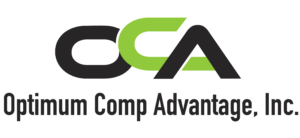Posts
The makeup of the workforce is changing faster than ever. With four generations now working side-by-side and Generation Z beginning to occupy the workforce, companies face recent challenges in engaging and motivating employees. To attract top talent in this competitive market, employers need fresh ideas on compensation, benefits, and performance management. But where to start?
A recent study from Optimum Comp Advantage provides data-driven insights. The recent Compensation and Performance Study surveyed over 3,000 professionals to uncover what drives them at work. Spanning ages 25-65 and multiple generations, the results reveal key shifts in workforce priorities.
By understanding these evolving preferences, employers can tailor rewards and experiences to inspire today’s employees. Here are the study’s most insightful findings and recommendations.
The #1 Motivator: Competitive Pay…With a Catch
Across nearly all age groups, competitive base pay still ranks as the top factor attracting and retaining workers. For employees under 55, fair pay outpaced all other motivators like benefits, work environment, and company culture.
However, base pay alone is not enough. Employees today also expect opportunities to increase their pay through incentives and career growth.
The study found a striking change in how younger workers view incentive compensation. For professionals aged 25-35, incentive pay ranked near the bottom just two years ago. Today, 92% say incentives are among their top three motivators.
These under-35 employees crave careers with escalating pay and responsibility. Competitive base pay draws them in … but incentive pay, and advancement keeps them engaged.
Takeaway: Lead with fair pay at hire. But don’t stop there. Layer on incentive opportunities, performance pay, and cleared paths for promotion.
What Benefits Do Employees Really Want?
Traditional benefits like health insurance, dental plans, and PTO are used to set companies apart. But they are now expected as table stakes. Employees under 45 expressed little preference for these staples.
Instead, they want benefits that support work-life balance, flexibility, and financial security. The most sought-after non-traditional benefits include:
- Flexible and generous PTO policies
- Remote work options
- Flexible scheduling
- Student loan assistance
- Tuition reimbursement
- Fertility benefits
- Financial wellness tools
These benefits demonstrate investment in employees’ whole lives. Perks like free meals or ping pong tables don’t address deeper needs. To attract and retain talent, target benefits to their lifestyle priorities.
Takeaway: Rethink benefits as a way to demonstrate caring for employees’ quality of life, financial health, and personal growth.
Personalize Performance Management
Annual performance reviews and raises struggle to engage younger employees. These systems feel disconnected from individual effort and the real-time pace of work.
Professionals under 35 showed little interest in traditional merit increases, ranking them near the bottom of motivators. They want to see how their work directly contributes to the organization’s success.
Instead of top-down reviews, they crave:
- Regular feedback and checkpoints
- Goals linked to company objectives
- Rewards for results, not tenure
- Managers invested in their growth
- Flexibility to master new skills
- Exposure to diverse projects
Essentially, younger workers want performance management tailored to their aspirations. They expect coaches, not bosses.
Takeaway: Make performance management personal. Set clear goals. Check in frequently. Help them grow skills. Most importantly, connect work to impact. Transition performance management into performance optimization.
The Blueprint for Engaging Today’s Workforce
The research paints a clear picture. Employees today want compensation, benefits, and performance optimization personalized to their priorities. Here is a blueprint for bringing your practices into the 21st century:
Compensation
- Offer competitive pay at hire and map clear paths for increases and advancement. Employees want to know how they can increase pay over time.
- Build in performance-based incentive plans. Reward results, not tenure.
- Get creative with benefits. Add ones that support work-life balance, flexibility, and financial health. Offer extras like paid volunteer time or professional development stipends.
Performance Optimization
- Check in regularly. Don’t wait for annual reviews. Provide ongoing feedback aligned to goals.
- Set goals aligned to company goals. Explain how their work impacts the big picture.
- Discuss development. Identify skills employees want to build and provide resources and assignments to grow them.
- Cultivate mentoring and coaching relationships. Employees want advisers invested in their success.
- Openly discuss career paths. Helping employees articulate their aspirations leads to greater engagement.
The Optimum Comp Advantage study reveals what today’s workforce values in their employment experience. Organizations that still cling to outdated compensation and performance practices risk losing talent to more progressive employers.
But by zeroing in on proven motivators – personalized pay, benefits, and career experiences – innovative companies can attract and inspire the workforce of the future.
Want to learn more? Download the full Optimum Comp Advantage study for additional statistics and insights on how to engage employees in today’s competitive talent market.
